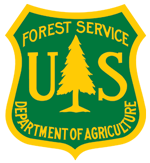Landscape Partnership Resources Library
FY17-21 WLFW-Northern bobwhite Map
This map was current as of FY21 for NRCS WLFW-Northern bobwhite but updated for FY22 based on the NRCS state offices that opted into the Northern bobwhite, Grasslands and Savannas Framework partnership (by FY22 there will be 24 states).
Map of NRCS States Opting In/Out of WLFW Northern bobwhite
In February 2021, NRCS requested that 30 state offices within the northern bobwhite current or historic range submit a final decision to National Headquarters on opting in or out of WLFW Northern bobwhite, Grasslands and Savannas. The decisions were completely voluntary and dependent on each states interest and ability to commit. These maps depict the distribution of states and their responses. Note that Oklahoma has now joined (and we need to updated this map)!
Presentation to WLFW Partners on NOBO, Grasslands, and Savannas Framework
On March 2, 2022 as the release of the release by NRCS of the new framework is pending, Bridgett Costanzo of WLFW and Jessica McGuire of Quail Forever gave an overview of the framework, the associated needs assessment, and activities already underway to add staff and design a national monitoring plan. To view the recorded webinar based on these slides, go to the webinars section
Introduction to Prescribed Fire in Southern Ecosystems
This USDA Forest Service publication is a guide for resource managers on planning and executing prescribed burns in Southern forests and grasslands. It includes explanations of reasons for prescribed burning, environmental effects, weather, and techniques as well as general information on prescribed burning.
Narrative: Gopher Tortoise PAC Methods
Narrative describing the range-wide approach for PAC development for the gopher tortoise (GT), as determined by the attending group of experts [NRCS, USFWS and State wildlife agencies] at a meeting held at the Jones Ecological Restoration Center in Georgia in March of 2016.
SE FireMap Version 1.0 BETA User Guide
Learn how to navigate the web map! This document offers a walkthrough with screenshots.
Movement and habitat use of Eastern hellbenders (Cryptobranchus alleganiensis alleganiensis) following population augmentation
With amphibian declines at crisis levels, translocations, including population augmentations, are commonly used for amphibian conservation. Eastern Hellbenders (Cryptobranchus alleganiensis alleganiensis) have declined to low densities in many areas of their range, making them ideal candidates for population augmentation. Both wild adults and captive-reared juveniles have been used for augmentations, but their suitability has never been directly compared. Herein, we use radio telemetry with Eastern Hellbenders to examine patterns of site fidelity, movement, and habitat use over a 2-yr period for adult residents, wild adult translocates, and captive-reared juvenile translocates. We used generalized linear models and generalized linear mixed models to identify temporal trends and explore the effects of residential status (resident vs. translocate) and origin/age (captive-reared juveniles vs. wild adults) on various ecological and behavioral traits relating to habitat. Site fidelity was high in adult residents and wild adult translocates, but lower in captive-reared juvenile translocates. Both adult and juvenile translocates had greater mean movement distances than residents, leading to larger home range sizes, but these differences decreased over time. Wild adult translocates had a higher probability of using artificial nest rocks than adult residents or captive-reared juvenile translocates. This pattern was most prevalent early in the study, indicating these shelters are particularly useful during the transition to release sites. Captive-reared juvenile translocates had lower site fidelity and utilized suboptimal habitat (smaller and fewer shelter rocks) compared to wild adults. Compared to previous studies, translocations had fewer negative effects on site residents or wild translocates and might be effective at promoting growth of Hellbender populations. However, translocations of captive-reared juveniles were less successful. As we are uncertain whether captive-rearing or ontogeny led to these differences, both longer head-starting times and conditioning should be explored to improve outcomes in captive-reared juvenile cohorts.
The use of nest boxes by the hellbender salamander in Western North Carolina
The hellbender salamander (Cryptobranchus alleganiensis) is a unique, large-bodied amphibian that serves as an excellent water quality indicator species in Western North Carolina. This animal has suffered substantial population declines over the past four decades throughout its range. Increased stream siltation largely attributed to human development fills the concave undersides of large rocks, consequently destroying hellbender breeding habitat. Habitat degradation has contributed to reductions in North Carolinian populations to such a degree that the species is now considered of Special Concern in the state. In order to restore hellbender population sizes under current land use conditions, researchers have recently begun developing artificial nest boxes that exclude sediment and promote increased reproduction. To identify the short-term efficacy of these shelters as substitutes for natural hellbender habitat in Western North Carolina, I constructed and placed 54 boxes across five river sites throughout the region. Following summer nest box installment, I examined each shelter through the breeding season for hellbender in habitation and to determine the quality of water passing through the structures. Additionally, I created a maximum entropy species distribution model and conducted a spatial connectivity analysis for the hellbenders of Western North Carolina to identify ideal locations for nest boxes installation in the future. Although no hellbenders have yet been detected in the artificial shelters, additional structural improvements and time may reveal nest boxes to be useful conservation tools for this iconic species of Special Concern.
Theory and practice of the hydrodynamic redesign of artifical hellbender habitat
The success of nest boxes in Missouri led researchers to test whether similar management tools could increase C. a. alleganiensis populations in the streams of western North Carolina, where these salamanders are listed as a Species of Special Concern (Messerman 2014). Fifty-four nest boxes were constructed following the boot-shaped design of Briggler and Ackerson (2012) in May 2013, and were installed across five known C. alleganiensis stream sites between late June and early August 2013. Messerman (2014) then monitored each nest box every three to four weeks through November 2013, and the boxes were revisited in August 2014 and July 2015 to observe structural condition and occupancy (Messerman, pers. obs.). Of the 54 nest boxes, only two structures at a single site were confirmed as inhabited in 2014 and 2015, and no breeding events were detected (Messerman, pers. obs.). Moreover, many of these ~50 lb concrete boxes moved in flood events or accumulated sediment at the downstream tunnel entrance (Messerman 2014). The low success of the boot-shaped nest box design in North Carolina may be attributed to the sites generally being narrower and shallower than those in Missouri, with much of the substrate consisting of bedrock slabs covered by relatively thin layers of rock, gravel and silt. Here we address the observed shortcomings of the original North Carolina design through the lens of engineering, and present a new and easily implemented nest box model for use in streams like those found in western North Carolina.
Evaluating artificial shelter arrays as a minimally invasive monitoring tool for the hellbender (Cryptobranchus alleganiensis)
Hellbenders Cryptobranchus alleganiensis are critically imperiled amphibians throughout the eastern USA. Rock-lifting is widely used to monitor hellbenders but can severely disturb habitat. We asked whether artificial shelter occupancy (the proportion of occupied shelters in an array) would function as a proxy for hellbender abundance and there by serve as a viable alternative to rock-lifting. We hypothesized that shelter occupancy would vary spatially in response to hellbender density, natural shelter density, or both, and would vary temporally with hellbender seasonal activity patterns and time since shelter deployment. We established shelter arrays (n = 30 shelters each) in 6 stream reaches and monitored them monthly for up to 2 yr. We used Bayesian mixed logistic regression and model ranking criteria to assess support for hypotheses concerning drivers of shelter occupancy. In all reaches, shelter occupancy was highest from June–August each year and was higher in Year 2 relative to Year 1. Our best-supported model indicated that the extent of boulder and bedrock (hereafter, natural shelter) in a reach mediated the relationship between hellbender abundance and shelter occupancy. More explicitly, shelter occupancy was positively correlated with abundance when natural shelter covered <20% of a reach, but uncorrelated with abundance when natural shelter was more abundant. While shelter occupancy should not be used to infer variation in hellbender relative abundance when substrate composition varies among reaches, we showed that artificial shelters can function as valuable monitoring tools when reaches meet certain criteria, though regular shelter maintenance is critical.
Improving the Utility of Artificial Shelters for Monitoring Eastern Hellbender Salamanders (Cryptobranchus alleganienses alleganiensis)
Artificial shelters show great promise as novel, non-invasive tools for studying hellbenders, but their use thus far has faced several challenges. During initial trials in multiple river networks, artificial shelters routinely became blocked by sediment and dislodged during high stream discharge events, and were rarely used by hellbenders. We sought to determine whether these complications could be overcome via alternative shelter design, placement, and maintenance. Between 2013 and 2018, we deployed 438 artificial shelters of two different designs across ten stream reaches and three rivers in the upper Tennessee River Basin. We assessed evidence for several hypotheses, postulating broadly that the availability, stability, and use of artificial shelters by hellbenders would depend on how shelters were constructed, deployed, and/or maintained. We found that maintaining shelters at least once every 40 days limited sediment blockage, and building ~ 40 kg shelters with 3-4 cm thick walls and recessed lids improved their stability during high discharge events. Additionally, we found that hellbenders most frequently occupied and nested in artificial shelters when they were deployed in deeper (~50+ cm) portions of reaches with high adult hellbender densities. Our results suggest that artificial shelters can serve as effective tools for studying hellbenders when designed, deployed, and maintained with these advancements, but also highlight some limitations of their use.
Golden-winged Warbler Conservation Initiative Brochure
This printable brochure from the Golden-winged Warbler Working Group highlights research priorities as well as key management strategies for private landowners and public land managers.
Northern Bobwhite in Working Grasslands
The northern bobwhite is often referred to and "edge" species, seeking habitat where crop fields intersect with woodlands, pastures, and old fields. The desired outcomes of project practices is 1) improved cattle production for grazing operations, 2) restore native grasses to the agricultural landscape, and 3) improve soil health, water quality, and wildlife habitat on farms.
Good for Bobwhite, Good for Cattle
America’s farmers, ranchers, and forest landowners are continuing to show how wildlife and working lands can prosper together. Let NRCS develop a comprehensive, resource conservation plan for your grazing operation and the northern bobwhite.
Fence - CPS 382
This practice facilitates the accomplishment of conservation objectives by providing a means to control movement of animals and people, including vehicles.
Riparian Forest Buffer
Buffers are applied on stable areas adjacent to permanent or intermittent streams, rivers, lakes, ponds, and wetlands that flood or pond.


























